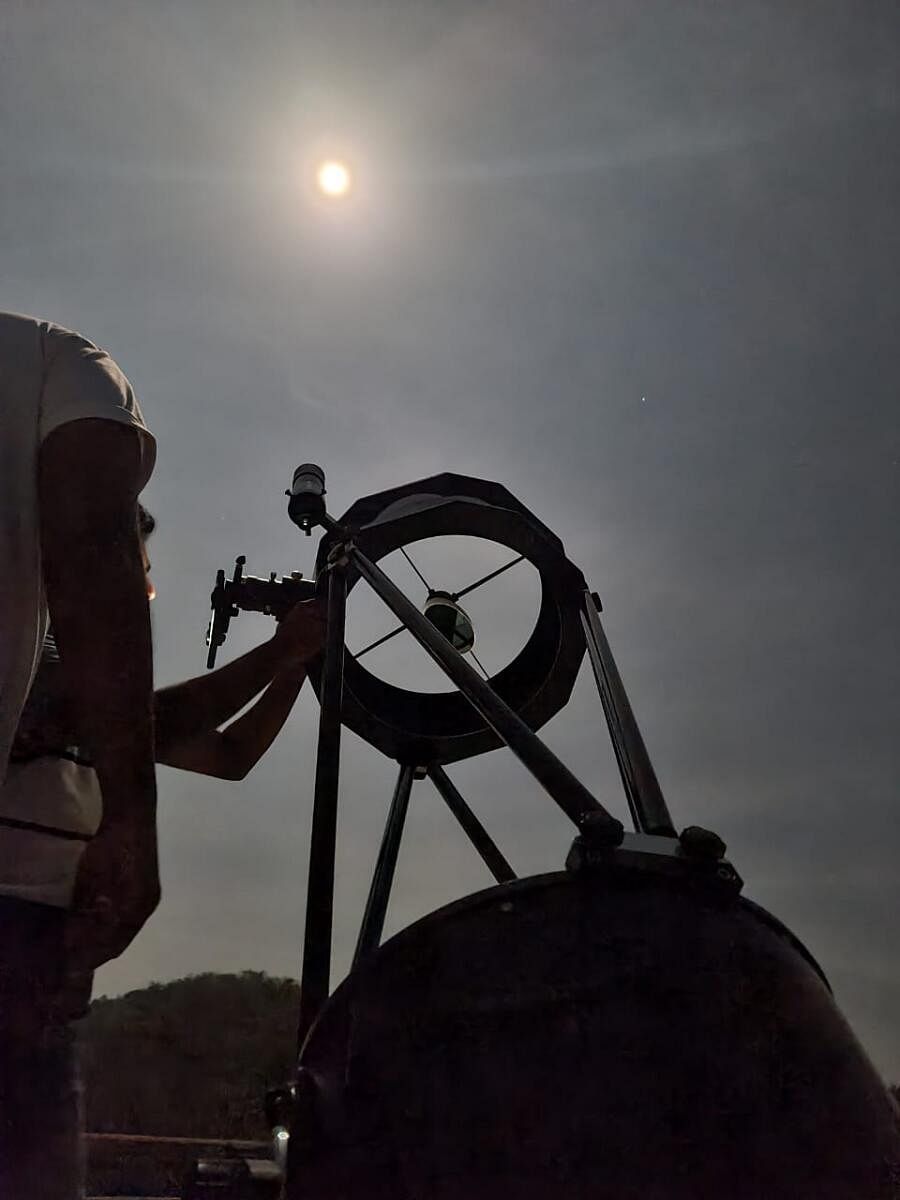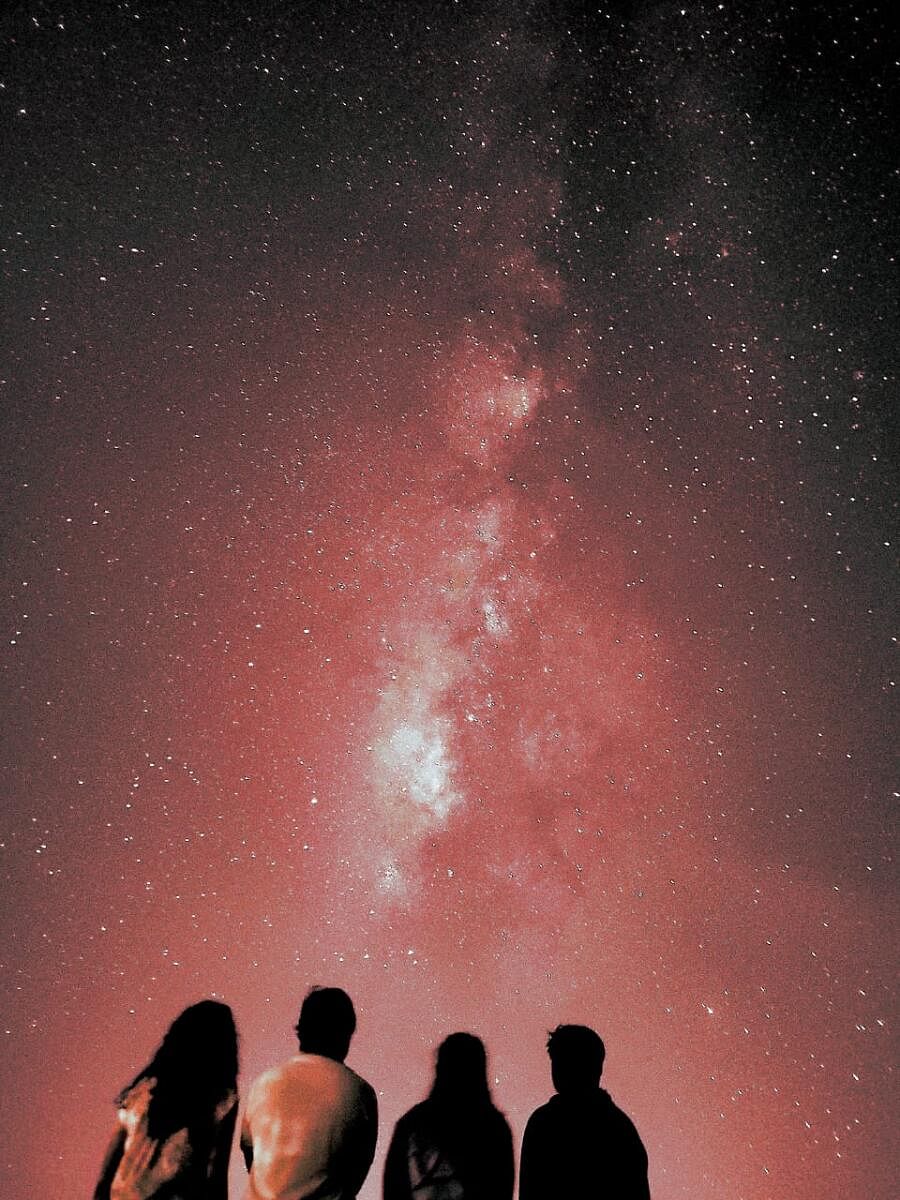
Seeing sparkling stars against the jet-black sky is always wondrous to behold. But for those living in concrete jungles, it is hard to see them with the naked eye or even with a telescope. All that one can see is the moon and a few of the brightest stars. Cities have thousands of artificial lights and spew pollutants into the air, masking the view of stars that are light years away. This compels enthusiasts and astronomers to travel to far-off places in search of the right sites for stargazing.
However, not any more, at least for the people of Karnataka. Away from light and air pollution, Hale Tarlgatta, close to Kunnur village in Haveri’s Shiggaon, is turning out to be a hotspot for skywatchers.
27-year-old Niranjan Kanagoudar, a sky-watching enthusiast, has recently set up an astrofarm named ‘Interstellar’ amid his 60-acre ancestral farmland, giving people an opportunity to explore the skies, along with experiencing farm life.
The centre currently has six telescopes where astronomy enthusiasts, students, astrophotographers and others sit throughout the night, watching galaxies, constellations, open clusters and globular clusters of stars, nebulae, the moon and other wonders of the universe unfold before their eyes.
Located on the edge of the Western Ghats, Kunnur village falls in the ‘Bortle 2’ category on the scale of light pollution. This means that it is a dark-sky site, making it perfect to act as a ‘natural planetarium’, says Niranjan. Taking advantage of this, he set up the centre here in March. So far, it has witnessed a footfall of over 1,500 visitors.
“I had always seen stars in a planetarium. But this was the first time I saw a spiral galaxy in the real sky. Waiting for the right moment and seeing millions of stars was a real thrill. It showed me how small we are, as part of a large universe,” says Vishweswarayya Choukimath, a civil engineer from Hubballi who has visited the astrofarm.
Demos and activities
A farmer during the day and an astro guide by night, Niranjan has a Master’s degree in astrophysics. “Our visitors usually arrive here in the evening. After the welcome, we tell them about stars, constellations and other aspects of astronomy in layperson’s language. We also conduct a demo on using the telescope and teach them how to focus it and handle it,” says Niranjan.
After having dinner at the farm, the group begins stargazing, till early morning. The session ends with watching the sun through a telescope.
As the village is far from urban interference, arrangements have been made for traditional north Karnataka food and stay in make-shift tents on the farm itself. They also host activities like archery and air rifle shooting for visitors in the evening.
“The centre and the scenic farm surroundings are like the best escape for urbanites. The effort by these youths to introduce north Karnataka’s people to astrotourism is worthy of appreciation,” says Dr Shrishail Madannavar, a paediatrician from Mundgod taluk hospital, who visited the centre along with his family.
Motivations
When asked how he came up with the idea of astrotourism, as it is still at a nascent stage in India, Niranjan says, “I was passionate about astronomy right from my school days. An interaction with ISRO scientists inspired me a lot.”
After completing his graduation in Dharwad, Niranjan went to Hyderabad for his Master’s degree. “But I did not want to land up in a corporate job. I wanted to be involved in farming and astronomy at the same time. So, I researched for a long time and came up with the idea of this centre,” he says.
One of the people behind his motivation is his former science teacher, Santosh Suragond. Having formerly taught at the government school where Niranjan studied, Suragond now teaches at the government PU college in Gadag. “Niranjan was always disciplined and inquisitive about science. He did not talk much, but never stopped when it came to discussions on science. This quality has helped him come up with this unique idea,” Suragond says.
The astrofarm has been set up at a cost of Rs 40 lakh. Two of Niranjan’s friends Shivakumar Ainapur and Shivanand Hosamani supported the venture financially.
“We are charging a nominal fee so that the centre can be maintained well,” Niranjan says. They offer discounts for school children.
The astrofarm also needs to be upgraded from time to time. “For instance, we have now ordered some equilateral mounts to help photographers. We further want to expand the astrofarm and turn it into an astronomy park,” says Niranjan. He adds that the best time to visit the centre is between October and May.
Uma Kulkarni, a science facilitator from Dharwad who is yet to visit the centre, says that this is a first-of-its-kind facility in north Karnataka. This can help researchers collect scientific data and teach school kids about astronomy. “In foreign countries, we have kids as young as six years taking up basic courses in astronomy. We should come up with such courses here too,” she says.
